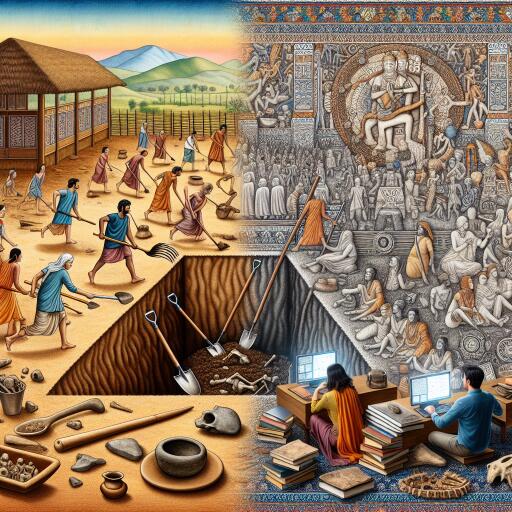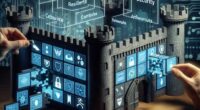Digital Public Archaeology: Bridging the Gap Between Ancient Artifacts and Modern Communities
Imagine uncovering the secrets of a site that served as a prolific source of copper tools crafted by the ancestors of Alaska Native people approximately 1,000 years ago. Such is the story of the Gulkana Site, a revered yet underrepresented archaeological area in Alaska. This site, pivotal in understanding the ingenuity of early civilizations, encapsulates the essence of a significant issue in the archaeological community: the challenge of managing legacy data.
I am Emily Fletcher, a dedicated Ph.D. candidate in Archaeology at Purdue University, and for the past four years, I have immersed myself in studying the Gulkana Site. Despite its historical importance, recognition of the site remains minimal, both within local communities, including the Alaska Native Ahtna people, and amongst many archaeologists.
Surprisingly, the Gulkana Site, identified and excavated nearly half a century ago, suffers from a common problem in archaeology—legacy data backlog. This issue, characterized by an accumulation of unanalyzed excavation records, hinders the essential connection between past findings and present research and public interest.
Addressing Archaeological Data Challenges
In the U.S., most archaeological excavations have occurred through Cultural Resource Management processes, sparked by federal regulations aiming to preserve historical sites ahead of development projects. This approach has generated millions of records, often left unexamined due to their complex and varied formats, especially those predating the digital era.
The dilemma lies not only in the arduous task of digitizing non-digital datasets but also in the broader issue of data access and utilization. Modern technologies, including artificial intelligence, have recently been harnessed to tackle this, as demonstrated by the creative initiatives like the Vesuvius Challenge, which endeavors to bring ancient texts to life through contemporary computational methods.
Innovative Solutions through Digital Public Archaeology
My research at the Gulkana Site embodies the innovative field of digital public archaeology, integrating the technical prowess of digital archaeology with the inclusive approach of public archaeology. This synthesis aims to make the past accessible and meaningful to both researchers and the broader community.
Rather than conducting traditional excavations, my work is computer-centric, focusing on digitizing and analyzing existing records to uncover new insights. By converting decades-old excavation notes into digital formats, I employ computational mapping and artificial intelligence to delve deeper into the history of copper artifact usage at the site.
However, the core of public archaeology—and my research—lies in engaging with communities directly connected to archaeological sites. Collaborating closely with the descendants of the Gulkana Site’s original inhabitants, my project not only seeks to further academic knowledge but also to foster a tangible connection between the Ahtna people and their ancestral legacy.
Through educational initiatives in Alaska, such as hosting courses on archaeology, Ahtna history, and technology, we bridge the gap between past and present. These programs empower local youth, coupling hands-on learning about archaeological practices with opportunities to create and share their own interpretations of their heritage through modern storytelling means, like video games.
Conclusion
The Gulkana Site exemplifies the latent potential of archaeological sites excavated decades ago to inform both our understanding of human history and contemporary cultural identity. As digital technologies evolve, so too does our ability to reinterpret legacy data, ensuring that the stories of the past continue to enlighten and inspire future generations.
This research, funded by the National Science Foundation, reveals the urgency and opportunity of addressing the archaeological legacy data backlog. In doing so, we can not only uncover new facets of human history but also enrich modern communities with a deeper understanding and appreciation of their cultural heritage.
The insights and methodologies discussed here highlight the critical role that digital and public archaeology can play in bridging the gap between ancient discoveries and contemporary society, shedding new light on the invaluable lessons that the past holds for us all.
Courtesy of The Conversation. This material from the originating organization/author(s) is presented with the intent to offer clarity, style, and comprehension in a condensed format. The views and conclusions expressed are those of the author(s) and do not necessarily reflect the positions of Mirage.News or any institutional affiliations.










